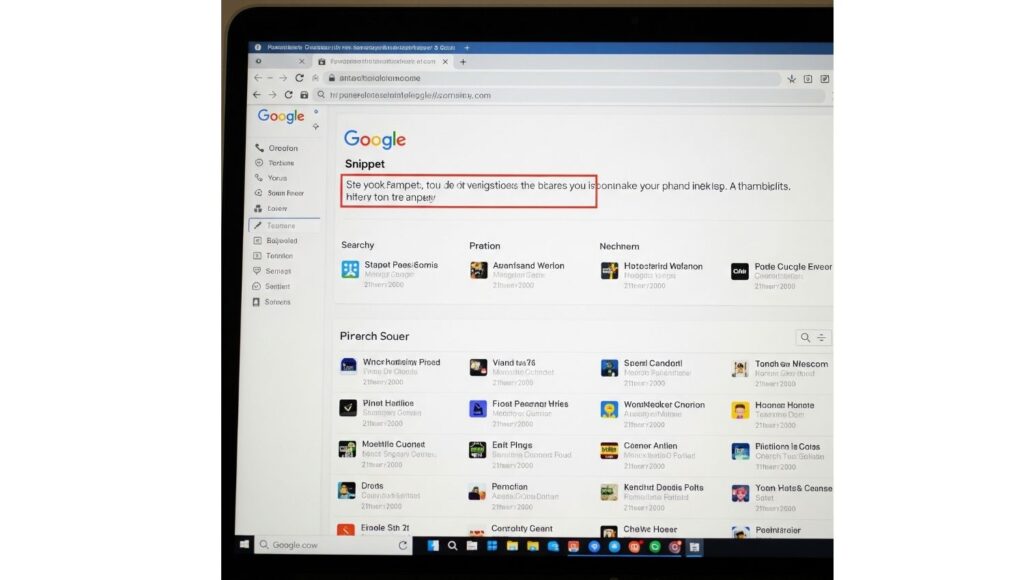Table of Contents
How to Rank for Featured Snippets (Zero-Click SEO)

Introduction
Welcome to zero-click SEO, where the main aim is not just to rank #1 but to take over the snippet above it.
In the ever-changing world of search engine optimization, featured snippets have become crucial for gaining visibility, authority, and traffic. Also called “position zero,” featured snippets provide quick, direct answers right on Google’s search page, pulling content from top-ranking sites.
But there’s a catch: most users do not click the link.
That’s right; Google delivers answers on the page itself. Instead of fighting for clicks, savvy brands are now focusing on visibility, branding, and zero-click success.
In this guide, you will learn:
- What featured snippets are
- Types of featured snippets
- How to optimize your content for snippets
- Common mistakes to avoid
- Practical tools and tactics to apply
- FAQs and advanced insights
Let’s jump into how you can claim position zero.
What Are Featured Snippets?
Featured snippets are selected search results that show at the top of Google’s organic results, just below the ads. They come from a webpage and directly answer the user’s question.
Here’s what they look like:
- A paragraph explaining the answer
- A list of steps or tips
- A table displaying structured data
- A video or YouTube result
- A definition box
Example: Search “What is digital marketing?” and you may see a paragraph from HubSpot or Investopedia, providing the answer without needing to click.
Why Featured Snippets Matter in SEO
- Higher Visibility: Position zero attracts 8-12% more attention than the #1 result.
- Authority Building: Google trusts your content enough to feature it.
- Voice Search Advantage: 70% of voice search answers come from featured snippets.
- Zero-Click Traffic: Even if users don’t click, they still see your brand.
Types of Featured Snippets
Understanding the different formats helps you create content suited for each snippet type.
1. Paragraph Snippet
- Format: 40-60 word answers
- Best for: Definitions, explanations, “What is…” questions
- Example:
“What is SEO?” shows a concise paragraph defining it.
2. List Snippet
- Format: Numbered or bulleted steps
- Best for: How-tos, recipes, DIY content, tips
- Example:
“Steps to create a blog” may show a 1-6 bullet list.
3. Table Snippet
- Format: Structured data (rows and columns)
- Best for: Price comparisons, schedules, statistics
- Example:
“Digital marketing pricing comparison” might show a table.
4. Video Snippet
- Format: Embedded video with timestamp
- Best for: Tutorials, visual guides, how-tos
- Example:
“How to install WordPress” can show a YouTube video at a key timestamp.
Keyword Research for Snippet Optimization
You can’t win the snippet without targeting the right keywords.
Step 1: Focus on Question-Based Keywords
Use these tools to find question-style queries:
- AnswerThePublic
- AlsoAsked
- SEMrush’s Keyword Magic Tool
- Google’s People Also Ask box
Examples:
- How to improve SEO ranking
- What is zero-click search
- Best time to post on Instagram
Step 2: Identify Snippet Opportunities
Use tools like:
- Ahrefs → Organic Keywords → SERP Features filter → Featured Snippet
- SEMrush → Position Tracking → Featured Snippets
Target keywords you already rank in the top 10 for. It’s easier to adjust content for snippet inclusion than to rank from the beginning.
On-Page SEO Tactics to Win Snippets
Now that you have the right keywords, here’s how to optimize your content.
1. Answer Clearly and Concisely
- Aim for 40-60 word answers for paragraph snippets.
- Use the exact query in an H2 or H3 heading.
- Provide a direct and simple answer right after the heading.
Example:
H2: What is zero-click SEO?
Zero-click SEO refers to optimizing content for featured snippets that satisfy user intent directly on the search results page without requiring a click.
2. Use Structured Content
- Use header tags (H2, H3, H4) to break up content.
- Include bullet lists, numbered steps, or tables when needed.
- Optimize for mobile readability.
3. Add FAQ Sections
Google often pulls snippet content from FAQs.
Tip: Use FAQ schema to help Google understand your page structure.
Schema Markup for Featured Snippets
What Is Schema Markup?
Schema is code added to your site to help search engines understand your content.
Types That Help with Snippets:
- FAQPage schema
- HowTo schema
- QAPage schema
- Recipe schema
- VideoObject schema
Tools to Generate Schema:
Content Format Tricks That Win Snippets
Here are some effective formatting tips:
Paragraph Snippet Tips:
- Use “is,” “are,” or “refers to” right after the keyword.
- Keep your intro definitions short.
- Use phrases like “In simple terms,” “By definition,” etc.
List Snippet Tips:
- Use clear subheadings: Step 1, Step 2, etc.
- Include numbers or bullet points.
- Use
olorulHTML tags.
Table Snippet Tips:
- Use the
<table>HTML tag. - Keep data short—3 to 5 rows work best.
- Label headers clearly.
Video Snippet Tips:
- Upload to YouTube.
- Add a detailed description with keywords.
- Use timestamps.
- Embed the video in your blog post.
Real-World Tools to Help You Win Snippets
Here are tools top SEOs use:
| Tool | Purpose |
|---|---|
| Ahrefs | Keyword + snippet tracking |
| SEMrush | Snippet analytics |
| SurferSEO | NLP-driven content optimization |
| Frase | AI content brief creation |
| Clearscope | Content grading + optimization |
| Google Search Console | Identify near-snippet rankings |
| AnswerThePublic | Long-tail + question research |
Common Mistakes to Avoid
Even experienced marketers can make errors with snippets.
Mistake 1: Writing Long-Winded Answers
Google prefers quick hits, not 300-word paragraphs.
Mistake 2: Ignoring Mobile Formatting
Over 60% of searches are on mobile—structure content for easy scrolling.
Mistake 3: Skipping Schema Markup
Without schema, Google may not recognize your content properly.
Mistake 4: Targeting the Wrong Queries
Not all keywords get snippets. Use tools to confirm snippet potential first.
Case Study: How a Blog Ranked for 7 Snippets in 30 Days
Website: TheNextDigital (example)
Problem: Low CTR despite Page 1 rankings.
Solution:
- Identified keywords with existing snippets.
- Reformatted answers into 40-60 word blocks.
- Used headers, bullet points, and FAQ schema.
- Added comparison tables.
Result:
- 7 new snippets gained in 30 days
- Bounce rate reduced by 22%
- 1.8x increase in branded search traffic
FAQs – Featured Snippets and Zero-Click SEO
Q1: Can a brand rank for multiple featured snippets?
Yes. Google ranks pages, not entire sites. A single domain can own many snippets.
Q2: How long does it take to win a snippet?
You can start seeing results in 1-4 weeks if your page is already in the top 10.
Q3: Do featured snippets affect click-through rate (CTR)?
Yes. CTR can decrease due to zero-click behavior, but visibility and authority increase.
Q4: Are featured snippets permanent?
No. Snippets change. You must keep optimizing to retain them.
Q5: Is it worth optimizing if I’m not in the top 10?
Not really. Focus on reaching Page 1 first, then optimize for snippets.
Conclusion
Ranking for featured snippets is no longer optional; it’s a vital part of modern SEO. As Google shifts toward zero-click results, owning that top space means increasing brand awareness, trust, and influence.
Remember:
- Research intent-based queries.
- Create direct, structured answers.
- Format for clarity.
- Use schema markup.
- Always monitor and improve.


